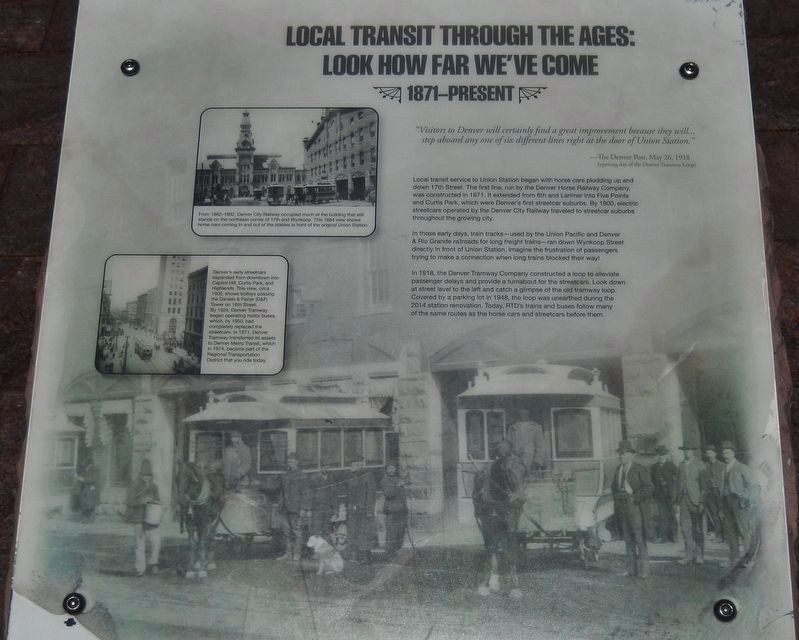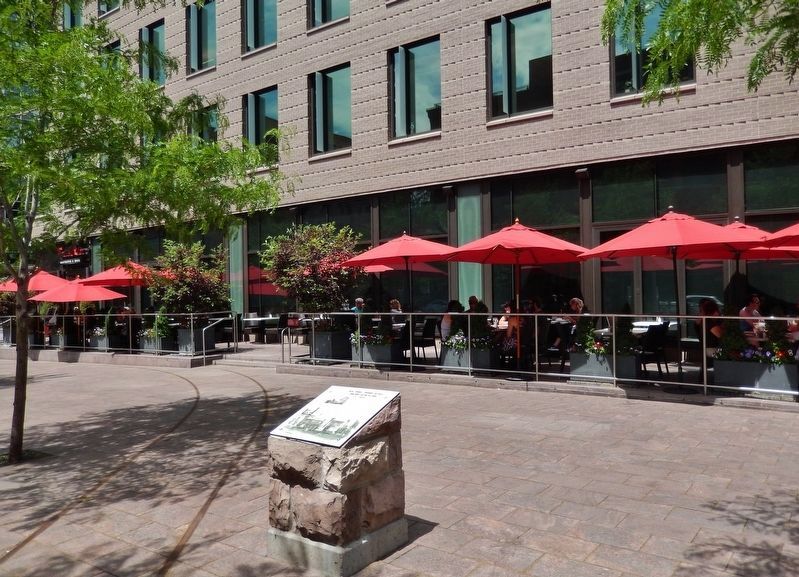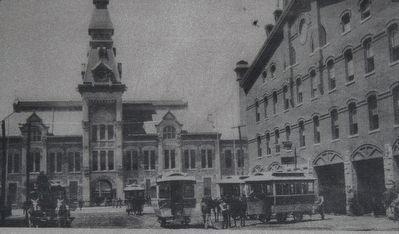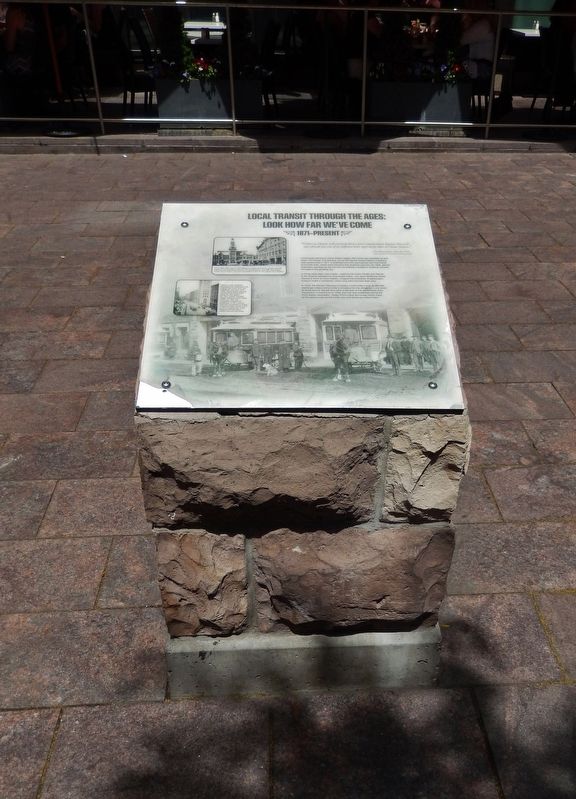Ballpark District in Denver in Denver County, Colorado — The American Mountains (Southwest)
Local Transit Through the Ages
Look How Far We've Come
— 1871-Present —
The Denver Post, May 26, 1918
(opening day of the Denver Tramway Loop)
Local transit service to Union Station began with horse cars plodding up and down 17th Street. The first line, run by the Denver Horse Railway Company, was constructed in 1871. It extended from 6th and Larimer into Five Points and Curtis Park, which were Denver's first streetcar suburbs. By 1900, electric streetcars operated by the Denver City Railway traveled to streetcar suburbs throughout the growing city.
In those early days, train tracks – used by the Union Pacific and Denver & Rio Grande railroads for long freight trains - ran down Wynkoop Street directly in front of Union Station. Imagine the frustration of passengers trying to make a connection when long trains blocked their way!
In 1918, the Denver Tramway Company constructed a loop to alleviate passenger delays and provide a turnabout for the streetcars. Look down at street level to the left and catch a glimpse of the old tramway loop. Covered by a parking lot in 1948, the loop was unearthed during the 2014 station renovation. Today, RTD's trains and buses follow many of the same routes as the horse cars and streetcars before them.
Topics. This historical marker is listed in these topic lists: Industry & Commerce • Railroads & Streetcars.
Location. 39° 45.137′ N, 105° 0.041′ W. Marker is in Denver, Colorado, in Denver County. It is in the Ballpark District. Marker is on Wynkoop Street north of 16th Street, on the right when traveling south. Marker is located on the pedestrian plaza walkway, near the southeast corner of the Union Station block. Touch for map. Marker is at or near this postal address: 1605 Wynkoop Steet, Denver CO 80202, United States of America. Touch for directions.
Other nearby markers. At least 8 other markers are within walking distance of this marker. Barteldes, Hartig Building (within shouting distance of this marker); C. S. Morey Mercantile Building (within shouting distance of this marker); Union Station Area (about 300 feet away, measured in a direct line); Union Station Timeline (about 300 feet away); Welcome to Union Station (about 300 feet away); The People of the Station (about 300 feet away); Denver City Railway Building (about 400 feet away); Henry Lee Building (about 400 feet away). Touch for a list and map of all markers in Denver.
Related markers. Click here for a list of markers that are related to this marker. Denver Union Station
Also see . . . Denver Tramway Company.
Denver’s streetcar system began 12 years after the founding of the city and physically shaped Denver as we know it today.
The story of Denver’s streetcar system tells the evolution of the city, which is still evident in Denver’s embedded commercial districts that emerged as key stops on the robust streetcar network. For nearly 40 years, Denver streetcars transported passengers throughout the city. At the height of trolley operations the Denver Tramway Company owned more than 160 miles of track and operated over 250 streetcars. By 1950 only 64 cars were still in use as motor buses began to take favor. After being decommissioned in 1950, the Denver Tramway Company sold the old trolleys for $100 each. (Submitted on June 11, 2018, by Cosmos Mariner of Cape Canaveral, Florida.)
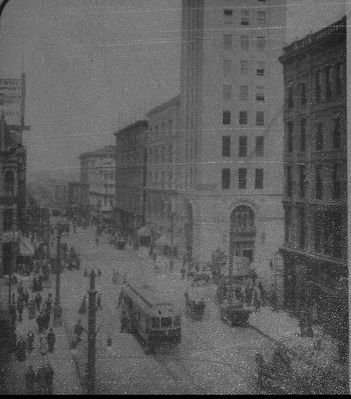
4. Marker detail: Denver's early streetcars
Denver's early streetcars expanded from downtown into Capitol Hill, Curtis Park, and Highlands. This view, circa 1900, shows trolleys passing the Daniels & Fisher (D&F) Tower on 16th Street. By 1924, Denver Tramway began operating motor buses, which, by 1950 had completely replaced the streetcars. In 1971, Denver Tramway transferred its assets to Denver Metro Transit, which in 1974, became part of the Regional Transportation District that you ride today.
Credits. This page was last revised on February 7, 2023. It was originally submitted on June 10, 2018, by Cosmos Mariner of Cape Canaveral, Florida. This page has been viewed 249 times since then and 8 times this year. Photos: 1. submitted on June 10, 2018, by Cosmos Mariner of Cape Canaveral, Florida. 2, 3, 4, 5. submitted on June 11, 2018, by Cosmos Mariner of Cape Canaveral, Florida. • Syd Whittle was the editor who published this page.
